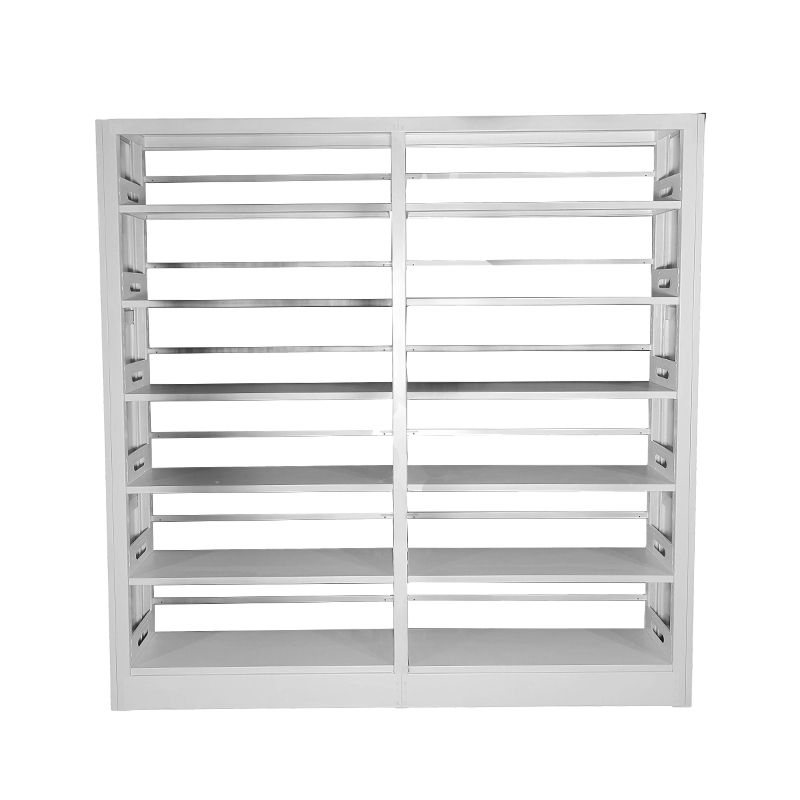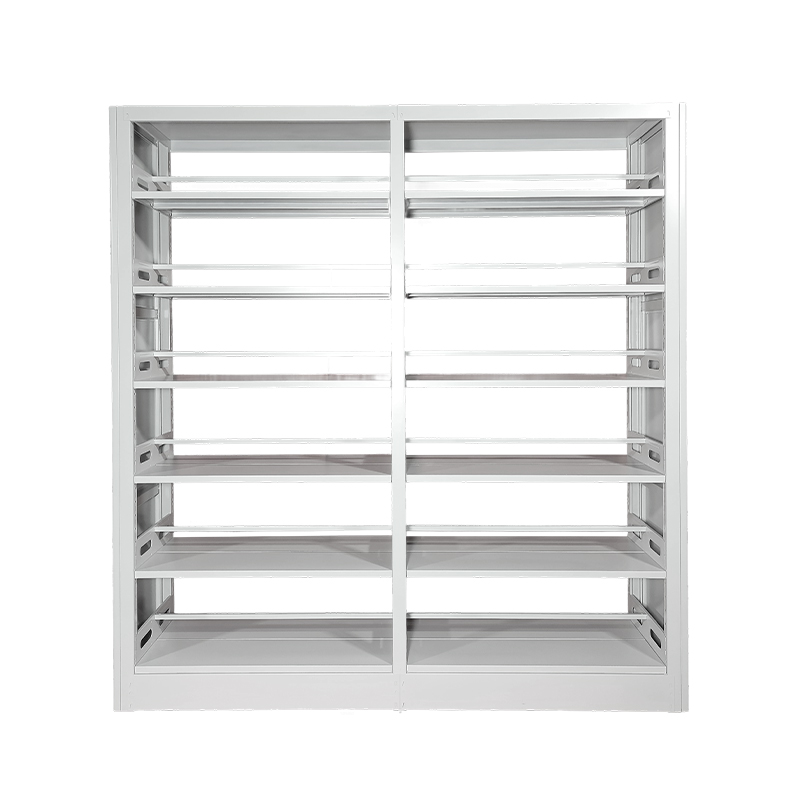How to avoid damage such as bumps and deformation during the transportation of steel bookshelf?
Release Time : 2025-06-04
Steel bookshelf is very easy to be deformed due to collision and extrusion during transportation, which not only affects the appearance but also may weaken the structural strength. To avoid such loss problems, it is necessary to build a comprehensive protection system from multiple aspects such as packaging material selection, packaging process design, and transportation link specifications.
The selection of packaging materials is the first line of defense to avoid loss. In view of the hard and angular characteristics of steel bookshelf, materials with good buffering performance need to be used. The inner layer can be made of soft materials such as pearl cotton and bubble film, which fit closely to the surface of the bookshelf and use its elasticity to buffer external impact. Especially the corners of the bookshelf, these positions are most vulnerable to damage in collisions, and need to be wrapped with extra thickness to form a buffer layer. The outer layer needs to be matched with a sturdy corrugated box or wooden packaging box. The corrugated box disperses the pressure through a multi-layer structure, and the wooden packaging box provides rigid protection with high strength. Both can effectively resist scratches and extrusion during transportation.
The sophistication of the packaging process directly affects the protection effect. During assembly, the bookshelf should be disassembled into components that are easy to transport, reducing the overall volume and weight, and reducing the difficulty of handling and the risk of collision. Foam boards or sponges should be used to isolate the components to prevent scratches caused by mutual friction. For larger components such as shelves and side panels of the bookshelf, wrapping film can be used to wrap and fix them, which can not only prevent the components from loosening and shifting, but also form a moisture-proof and dust-proof barrier. At the same time, small accessories such as screws and connectors should be stored separately in special packaging bags and fixed to the main body of the bookshelf to prevent loss or scattering and damage to the surface of the bookshelf.
The choice of transportation tool is as important as the loading method. Vans are preferred as transportation tools. The closed compartment can effectively protect the bookshelf from wind and rain, and reduce the possibility of impact from foreign objects. During loading, the principle of "heavy does not press light, large does not press small" should be followed, and the steel bookshelf should be placed in a stable position at the bottom of the compartment to avoid mixing with other goods. Appropriate gaps should be reserved between bookshelves, and cushioning materials should be filled to prevent mutual squeezing. If there are a large number of bookshelves, they can be stacked, but wooden pallets or hard pads must be placed between each layer to evenly distribute the pressure and prevent the lower bookshelves from deforming due to excessive load.
The operating specifications during the handling process are directly related to the integrity of the bookshelf. The handling personnel need to undergo professional training and master the correct handling skills. For large bookshelf components, a multi-person collaboration method should be adopted to avoid dragging or lifting by a single person to prevent deformation of components due to uneven force. When using mechanical equipment such as forklifts for handling, it is necessary to ensure that the fork is in the correct position to avoid direct contact between the fork and the bookshelf to cause scratches or dents. During loading and unloading, it is strictly forbidden to throw or roll the bookshelf. It should be handled with care to minimize collision and impact.
The transportation route and driving conditions will also affect the state of the bookshelf. When planning the transportation route, you should try to choose a road with good road conditions and flat roads, avoid potholes and bumpy sections, and reduce the impact of vibration on the bookshelf during driving. The driver needs to remain stable during driving, avoid sudden braking, sharp turns and other violent operations, and prevent the displacement and collision of goods in the carriage. At the same time, pay attention to weather changes in real time. If there is bad weather, take protective measures in time, such as reinforcing the tarpaulin of the carriage to ensure that the bookshelf is not attacked by wind and rain during transportation.
Monitoring and inspection during transportation are important means to find problems in time. Monitoring equipment can be installed in the carriage to observe the status of the bookshelf in real time. If the goods are found to be displaced or the packaging is damaged, stop the car in time for processing. During long-distance transportation, set up multiple inspection nodes, open the carriage regularly to check the fixing of the bookshelf and the integrity of the packaging, and immediately reinforce or repackage if problems are found. In addition, establish a transportation information feedback mechanism, and keep close communication between the driver and the recipient to ensure that the problem can be solved in time.
The improvement of after-sales service is the last guarantee for transportation losses. Even if comprehensive protective measures are taken, there may still be unforeseen losses. Therefore, a detailed after-sales processing process needs to be formulated. If the bookshelf has problems such as bumps and deformation after transportation, the recipient should take photos for evidence in time and feedback to the supplier. Suppliers need to respond quickly and provide solutions such as repair and replacement according to the degree of damage. At the same time, they should review the transportation process, summarize experience and lessons, and continuously optimize transportation protection plans to ensure that the steel bookshelf is intact during subsequent transportation.





